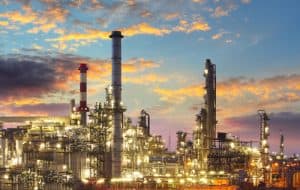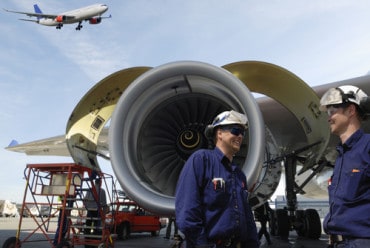
How one firm is building “the refinery of the future” by relying on predictive maintenance.
Name of Organization: Texmark Chemicals
Industry: Manufacturing
Location: Galena Park, TX
Opportunity or Challenge Encountered: The chemical processing industry, as is the closely related oil and gas refining sector, are extremely capital-intensive businesses, with huge inventories of physical assets and facilities, from pumps to pipelines connected to units, streams, and fluid systems.
While these plants lead the way with the latest technologies, they are usually slow in adopting digital approaches to monitoring operations, due to concerns about disrupting safety procedures. Texmark Chemicals sought to change this mindset, setting out on an ambitious quest to build the “Refinery of the Future” — a highly intelligent, integrated, and automated assembly of systems and people.
How this Opportunity or Challenge Was Met: A key component of Texmark’s Refinery of the Future vision is predictive maintenance, enabled through advanced analytics, artificial intelligence, edge computing, and industrial Internet of Things (IoT),
See also: Case study — Now AI can spot fashion trends
The effort began with reviewing the refinery’s existing maintenance processes, which incorporated a combination of reactive maintenance, responding to an immediate asset outage; planned maintenance, performing updates on a routine schedule; and proactive maintenance, tending to certain pumps based on historical utilization patterns, according to a case study published by Deloitte.
The move to predictive maintenance occurred in three phases:
- Establish a digital foundation by engaging edge-to-core connectivity and implementing location-based services using wireless sensors.
- Integrate an IoT platform (in this case, HPE’s Edgeline Converged IoT platform), enabling high-speed data capture analytics.
- Engage the ecosystem to deliver a turnkey IoT solution featuring predictive maintenance and asset monitoring.
Texmark employees were intimately involved in this phase of the program, spending up to 1,000 hours a year conducting walk-downs and vibration analysis to determine when a pump might malfunction. “By implementing digital enablers, Texmark could shift toward smart predictive maintenance, utilizing data to drive their decision making to predict and prevent asset failure, reduce risk, increase productivity and improve costs.”.
Key to these efforts was persona-based predictive maintenance. “These data-driven personas reflected the daily functions of different job types, creating a framework to allow immediate reductions in employees’ existing manual tasks,” the case study adds. Employees also had the opportunity to develop new skills as they moved through the process.
Benefits of This Initiative: With predictive maintenance, Texmark has increased its mean time between failures and now can more quickly identify root causes. The company expects a 50 percent reduction in planned maintenance costs, with the potential to reduce the 1,000 hours per year currently spent conducting walk-downs and vibration analysis to determine malfunctions. Predictive maintenance is helping the company to anticipate and prevent asset failures before they happen. The next phase of the Refinery of the Future project is expected to incorporate advanced video analytics, safety and security improvements, connected worker and full lifecycle asset management.
(Source: Deloitte)






























